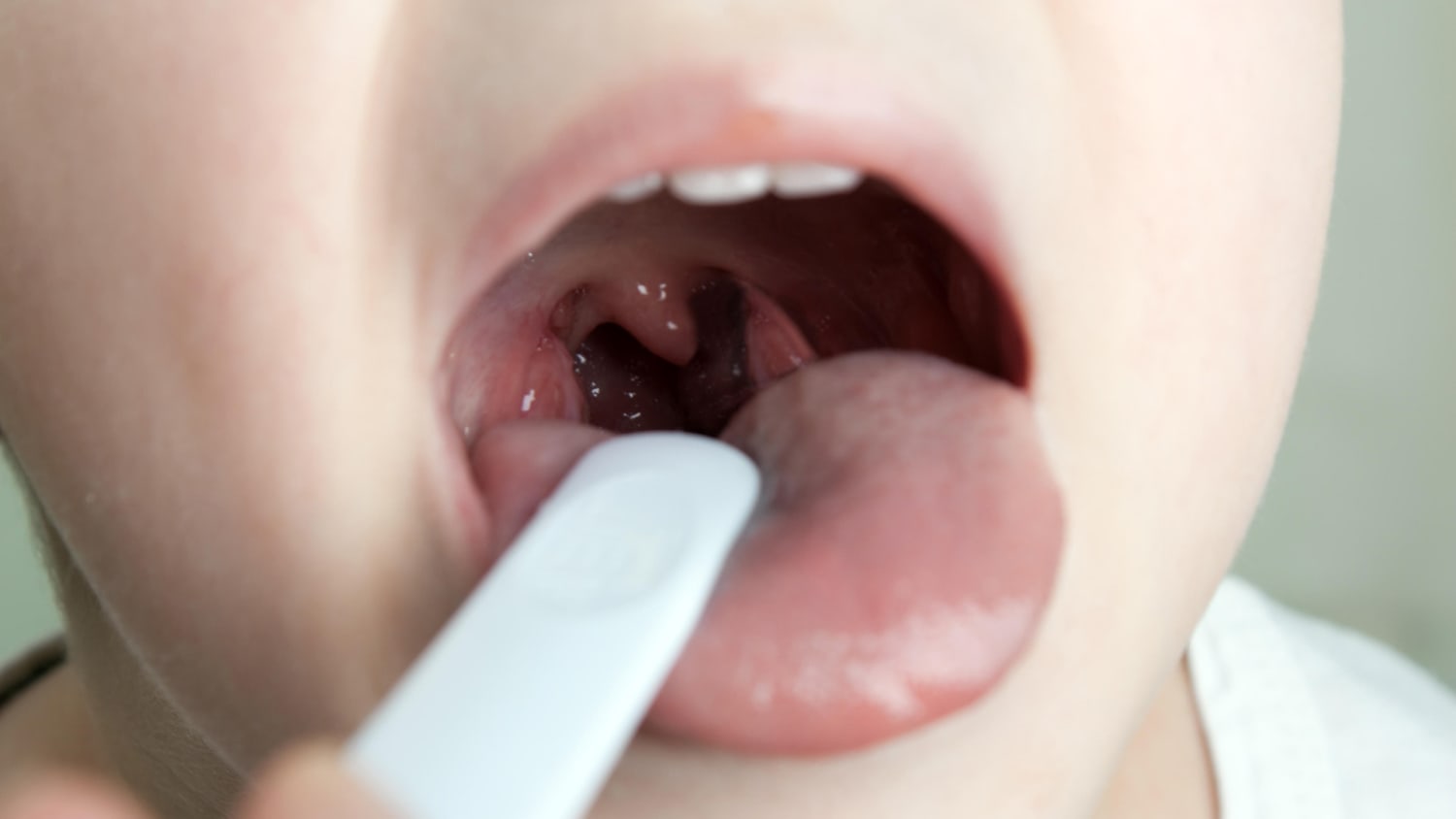
Children get sore throats often, especially with colds or allergies, but when the pain lingers beyond a couple of days and doesn’t improve with rest or fluids, it may be more than a passing irritation.
Tonsillitis pain is usually stronger, sharper, and more persistent than standard cold symptoms.
If your child avoids swallowing or starts complaining every time they eat or drink, the discomfort may be coming directly from inflamed tonsils.
This kind of sore throat doesn’t fade overnight or shift in intensity—it holds steady, sometimes worsening at night.
Look for signs that your child is unusually quiet, grumpy, or not finishing meals.
Their behavior may reveal what their words can’t fully explain.
Trouble Swallowing or Pain When Eating
When the tonsils are swollen and inflamed, eating becomes uncomfortable, and swallowing solid food might feel nearly impossible.
Your child may start refusing food they usually enjoy, especially items that require chewing.
Even drinking water or swallowing saliva might cause visible discomfort, often leading to excessive drooling or slow chewing.
In younger children, look for signs like spitting out food, pushing away spoons, or touching the neck when swallowing.
This behavior isn’t always about being picky—it can be a real sign of throat pain that shouldn’t be ignored.
Appetite loss plus swallowing trouble often points to something more serious than a mild sore throat.
White Patches or Redness in the Throat
One of the clearest visual signs of tonsillitis is found by gently checking the back of your child’s throat under good lighting—if you see white or yellowish patches on the tonsils or obvious redness and swelling, it’s a strong indicator of infection.
Healthy tonsils are pink and smooth, but inflamed ones become bumpy, irritated, and visibly coated in some cases.
A flashlight and a small tongue depressor (or spoon) can help you check more clearly.
You don’t need to press hard—just enough to see what’s going on.
If your child gags easily or refuses to open their mouth, that’s also worth noting, as it may mean the discomfort is worse than expected.
Not all sore throats show these signs, but when they do, a doctor should take a closer look.
Swollen Lymph Nodes Under the Jaw or in the Neck
Tonsillitis often causes the lymph nodes near the jaw and upper neck to swell as the immune system works to fight infection—if your child’s neck feels tender, or you notice firm lumps that weren’t there before, that may be a sign of enlarged lymph nodes responding to tonsil inflammation.
Gently feel along both sides of the neck for warmth, swelling, or uneven texture.
Children might complain of soreness when turning their heads or resist having their shirts pulled over.
These swollen nodes aren’t dangerous themselves, but they do signal that the body is actively responding to illness.
Their presence, especially alongside throat pain, strengthens the case for a tonsillitis checkup.
The swelling may remain even after other symptoms improve, but it should gradually fade with treatment.
Fever That Appears Without Other Cold Symptoms
A low-grade fever can accompany many minor illnesses, but a sudden spike in temperature—especially without coughing or runny nose—may point to a tonsil infection.
If your child becomes flushed, tired, or complains of chills while otherwise appearing cold-free, consider tonsillitis as a possible cause.
Fever plus a sore throat often triggers a strep test at the doctor’s office, and while not all cases of tonsillitis are caused by strep, the symptoms often overlap.
Persistent or high fever usually means it’s time to call the doctor.
It’s better to get it checked than risk it getting worse.
Track the temperature patterns; consistent spikes are more telling than isolated readings.
Bad Breath That Doesn’t Go Away
Bad breath in kids can come from poor brushing or certain foods, but when it’s sour, strong, and persistent even after brushing or rinsing, it may be related to infected tonsils.
Tonsillitis can lead to trapped bacteria and mucus around the tonsils, which produces a noticeable and unpleasant smell.
This breath odor is different from morning breath—it lingers throughout the day and doesn’t fade after meals or hydration.
If your child’s breath seems unusually strong, especially alongside sore throat or fever, consider it another red flag.
Some kids also report a strange taste in their mouths, which may be from draining fluid or inflamed tissue.
Parents often notice this change before the child complains.
Fatigue That Comes On Suddenly
Tonsillitis taxes the immune system, and many children respond by becoming sluggish, unusually sleepy, or moody—even before a fever develops or pain becomes severe.
If your child who usually runs around nonstop suddenly wants to nap or sits quietly for long periods, that change may be connected to something deeper.
Tiredness tied to tonsillitis often appears abruptly, not gradually.
You may also see dark circles under the eyes, low appetite, and irritability.
Fatigue without explanation always deserves attention, especially when paired with sore throat or swallowing difficulty.
Energy often returns quickly with treatment, making this symptom one of the first to improve.
Your Child May Seem “Off” Without Obvious Symptoms
Sometimes the signs aren’t physical—they’re behavioral.
Your child may be clingy, unusually quiet, or more tearful than usual.
They may not say, “my throat hurts,” but they may avoid talking altogether or whisper instead of speaking normally.
Tonsillitis doesn’t always come with textbook symptoms, especially in toddlers or children who can’t articulate what’s wrong.
If your child’s behavior shifts suddenly and doesn’t align with their usual patterns, pay attention.
Parents often sense something is off before any visible signs appear.
That instinct is worth listening to—and sharing with the pediatrician.
